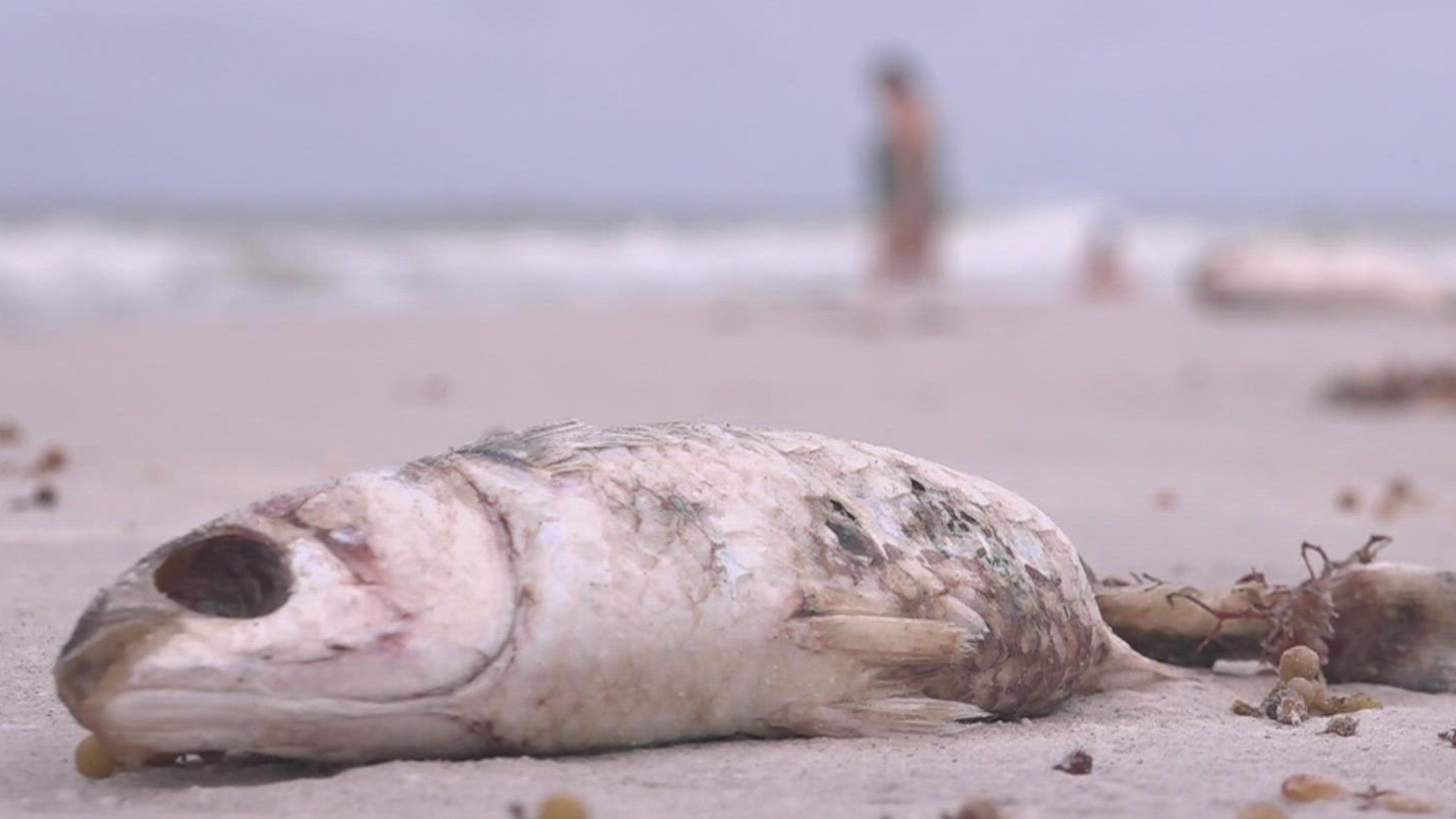TAMPA, Fla — Scientists have known for a while certain nutrients fuel red tide. Now, researchers at Florida Gulf Coast University and Mote Marine Laboratory are learning more about the role fish that die from red tide play in the problem.
Mike Parsons is a professor of marine science at FGCU and studies red tide as a part of his job. “We’ve known for a while now that red tide can kill fish," Parson said. Now he's asking the question, are the dead fish that linger in the ocean making red tide worse?
The answer, yes. “We confirmed a lot of nutrients are released from the dead fish," Parsons stated. Nutrients like nitrogen and phosphorus fuel the red tide toxin, Karenia brevis, which kills sea life.
Normally, when red tide is present and severe, local counties have crews clean the dead sea life. Parsons said that needs to happen sooner, so red tide isn't fueled. Basically, we can't wait for the fish to wash ashore, we need to remove them once spotted in the water. Normally, dead sea life will float to the surface. "Removing these fish, the idea is we can lessen red tide because we’re removing one of the nutrient sources. We’re putting red tide on a diet basically,” Parson explained.
Right now, cleanup crews bring dead sea life to the landfill to be disposed of. "Instead of just throwing these fish into a landfill and having them rot away, we can turn it into something good and something useful," Parsons stated.
This FGCU study reveals the dead sea life could be utilized as an organic fertilizer. First, scientists are studying how to remove dangerous toxins caused by red tide.
"The thing we have to be sure of is the toxins are removed and everything is broken down," Parson added. Next, they will see how the dead sea life and be composted into organic fertilizer. The fertilizer can be sold and therefore it becomes an economic benefit.
While the removal of the dead fish early on is revealed to be an environmental benefit, it could be a big economic win as well. FGCU economists estimated that, between 2018-2019, Lee and Collier counties both spent about 19 million dollars per month in cleanup efforts. Parsons said if dead sea life is removed early on, we can prevent the problem from getting worse and needing more cleanup efforts.
Right now, they are studying the associated costs, but strongly believe if removed early, it would cost less than 19 million dollars.
"If our cleanup costs are less than 19 million dollars per month, then we should come out ahead of this," Parson explained.
Right now FGCU scientists are continuing their study to determine how to make the fertilizer safe and organic. Plus, scientists are working to see the costs involved with the cleanup and how that would work for each Florida municipality impacted by red tide.

